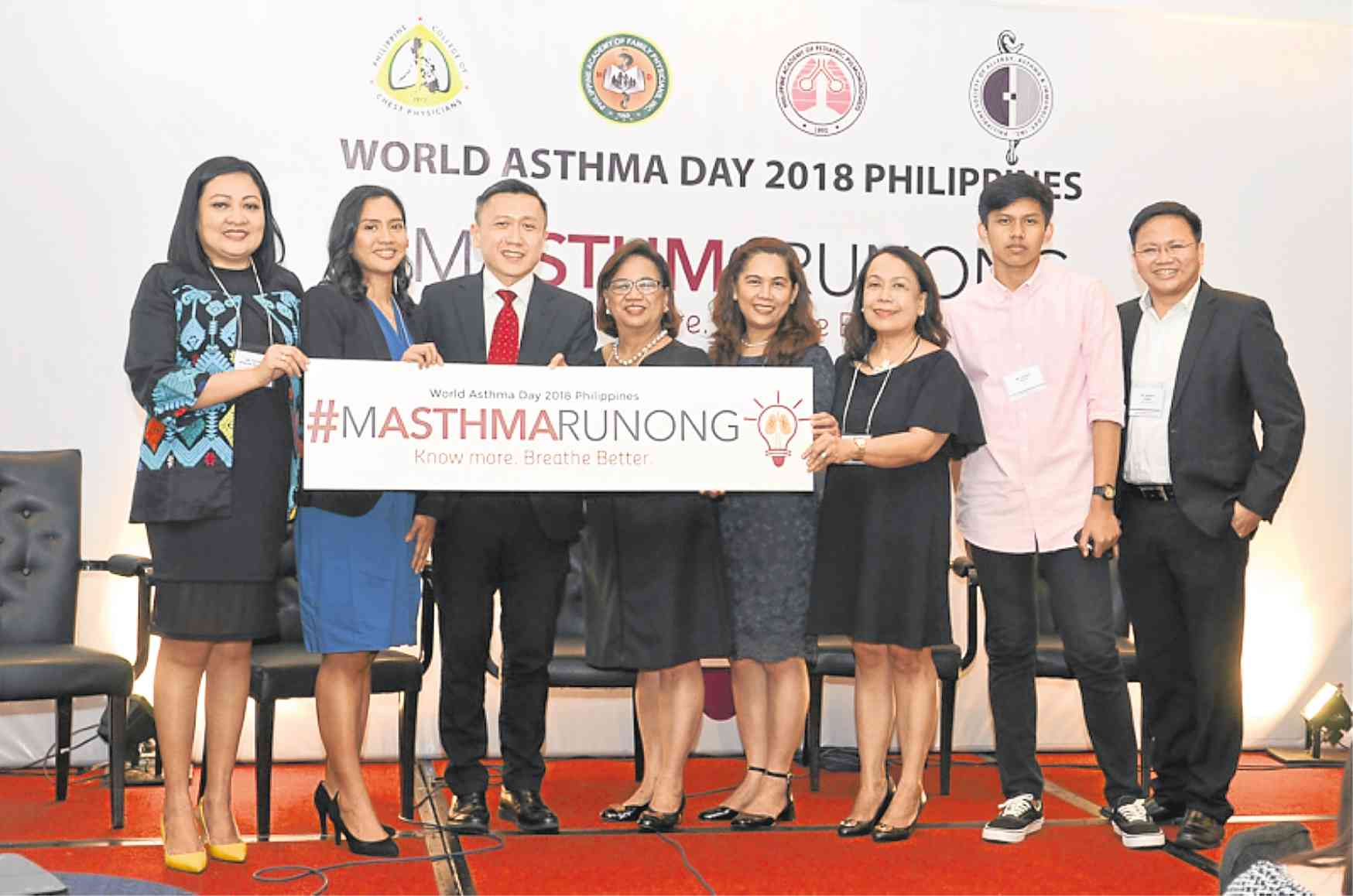
The Philippines ranks No. 9 in asthma mortality, with up to 7.9 percent of approximately 315 million suffering from the ailment globally. The prevalence of asthma in the Philippines alone was reported at 26.7 percent back in 2002, according to data from the National Asthma Epidemiology Survey.
Contrary to common belief, people with asthma have difficulty breathing out, a sensation akin to breathing out through a straw. Asthma is a chronic respiratory disease marked by inflammation of the air passages, temporarily narrowing the airways that carry oxygen to the lungs.
The airways are tubes that carry air in and out of the lungs. Asthmatic people have sore and swollen airways, making them extra sensitive to allergens, irritants and other triggers. The airways get narrower and the lungs receive less air each time they react to such triggers, causing wheezing, chest tightness, coughing and trouble breathing, especially in the morning or evening.
Asthma attacks happen when symptoms are worse than usual. A severe asthma attack closes the airways so much that the vital organs no longer receive enough oxygen. People can die of severe asthma attacks.
World Asthma Day
As World Asthma Day approaches on May 1, the Philippine Society of Allergy, Asthma and Immunology, Philippine College of Chest Physicians, Philippine Academy of Pediatric Pulmonologists, and the Philippine Academy of Family Physicians, with AstraZeneca Philippines, will launch a campaign dubbed “#mASTHMArunong” on May 3 at Glorietta Activity Center, Makati City.
Activities are lined up for the entire family, including free lectures on asthma and the different kinds of treatments available in the market.
Asthma has remained one of the Philippines’ top health problems because many Filipinos have no access to, or are not given, appropriate medicines, while some simply do not know they have asthma.
“People with severe, uncontrolled asthma have eight times higher risk of death and 10 times higher risk of hospital stays,” said Dr. Justin Chin, country president of AstraZeneca Philippines.
The campaign will emphasize the importance of education in asthma management. Well-informed families usually have the asthmatic members of their clan living normal, productive lives.
Jeremy Felix, a 14-year-old student at Ateneo de Manila, has been asthmatic as a child and carries a nebulizer wherever he goes. At 5’9”, the boy is actively pursuing one of his passions, basketball, playing with kids his age every chance he gets. He doesn’t allow his condition to get in his way.
“The biggest myth about asthma is that you have to stay away from exercise. If you’re properly informed, you know that you can live a normal life even with asthma. We have asthma patients who are also athletes and triathletes,” said Dr. Victoria Chato-Andeza, head of Bronchial Asthma, Respiratory Allergy Council of the Philippine Society of Allergy, Asthma and Immunology.
Exercise may, however, trigger an attack with certain forms of asthma, so it is important for patients to identify the triggers and avoid them to minimize flare-ups, and follow a schedule that includes regular checkups with a doctor, Andeza explained.
Allergic asthma
The most common form is allergic asthma, a type of allergy similar to allergic rhinitis. Most people with asthma also have allergies—40 percent of people with allergic rhinitis have asthma, while 80 percent of asthmatic people have allergic rhinitis. Asthma triggers can include exposure to allergens such as house dust mites, molds, cockroaches and pollens; tobacco smoke; pollution; animal hair; and industrial wastes.
“Another problem we see is that people tend to self-medicate. If you have difficulty breathing, you need to see a doctor to rule out other medical conditions because not everyone with breathing problems has asthma,” said Dr. Ma. Bella Siasoco, chair of Asthma Council, Philippine College of Chest Physicians.
Doctor’s prescription
Poor control of asthma can have life-threatening consequences. Only a physician can give the proper dosage specific to a patient’s needs and condition, Siasoco said.
Information dissemination is crucial in treatment and in saving lives, said Dr. Leilanie Apostol-Nicodemus, national board member of the Philippine Academy of Family Physicians, noting how some Filipino parents still force their asthmatic children to eat lizards, believing that consuming the animal can cure asthma.
“We need to improve the quality of health services with competent health professionals, and equip our health facilities. I believe in patient empowerment. There should be proper medication, dosing and regular follow-ups,” Nicodemus said.











































